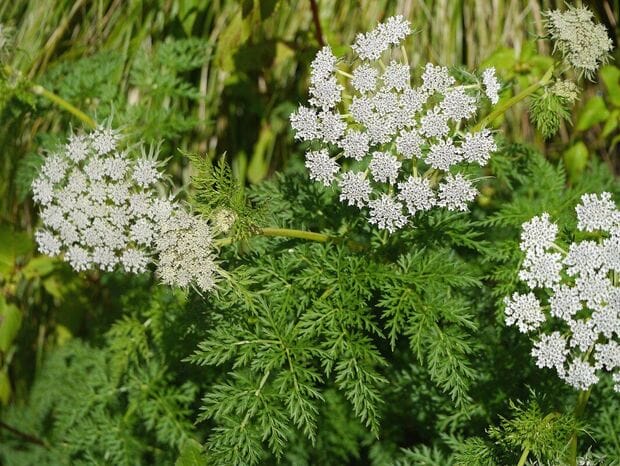Selinum wallichianum, Tang kun ཏང་ཀུན་
Tang kun (Tibet)Mura (Root, Ayurveda)
Mural (Siddha)
 Selinum wallichianum
Selinum wallichianum(Photo by Dinesh Valke) (Wikimedia)
Botanical name:
Two different herbs supply Tang kun:
- Tang kun dkar po (‘Female’): Selinum wallichianum (syn. S. tenuifolium, S. candollei, Peucedanum wallichianum, Ligusticum coniifolium)
- Tang kun nag po (‘Male’): Sinolimprichtia alpina
Parts used:
Root; Seed; Whole herb in flower
Temperature & Taste:
Cool, dry. Bitter, Pungent, Sweet
Classification:
Uses:
1. Clears Wind-Heat, Resists Poison:
-Fever (Ayurveda, Tibet)
-acute Wind-Heat disorders
-General Antidote to Poison
-burning feeling of the body (Ayurveda)
2. Moves Qi, Settles Wind, Stops Spasms:
-Dizziness, Syncope, Fainting (Root, API)
-Dyspnoea, Asthma (Root, API)
-Colic, Gastritis, Intestinal pain
-diseases from admixture of Wind-Phlegm (Tibet)
-Tumors
3. Clears Heart Fire:
-Heat disorders of the Heart
-also for Thirst (Ayurveda)
4. Externally:
-topically to Cuts and Wounds, and to stop bleeding
Dose:
Root or Seed Powder: 1–3 grams
Substitute:
The root and Indian Spikenard (Nardostachys jatamansi) have been used as substitutes for one another.
Main Combinations:
Major Formulas:
Selinum 6 (Tang kug drug thang)
Undying Aloeswood 8 (Chi med a gar brgyad pa)
Cautions:
Slightly toxic. Avoid overdose.
